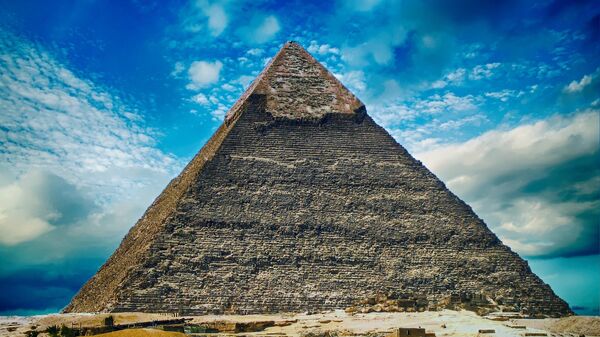The find by archaeologist Pierre Tallet and his team suggested that not only Egypt but also the neighbouring Sinai Peninsula was involved in the colossal construction of the Great Pyramid of Giza, according to the Channel 4 documentary “Egypt Great Pyramid: The New Evidence”.
After researchers discovered a tool, believed to be used to shape the stone blocks of one of the Seven Wonders, near the port town of Wadi al-Jarf, they also possibly traced the origin of copper needed for the unique construction project. The archaeologist’s team unearthed the remains of a lost ancient jetty just three miles away from the main dig.
“Pierre’s team has mapped out the jetty at low tide to reveal that it stretches 200 metres out to see in an L shape. This harbour was built to be big enough to protect a large fleet of cargo boats that would sail to the Sinai Peninsula”, the documentary says.
The researcher himself referred to his find as “an absolutely incredible discovery”.
“So we have the most ancient artificial harbour ever found in the world”, Tallet said in his interview.
According to him the uncovered jetty was very well made as it lasted “at least four millennia from the time of construction”. He also noted that his team had uncovered about 25 anchors at the bottom of the harbour. The researcher suggested that it was used exclusively to deliver copper, needed for making tools during the construction project. He recreated the apparent route, which included the city of Sinai, where the material was mined, the port in Wadi al-Jarf and the distant site of the Great Pyramid in El Giza.
READ MORE: 'Unique Find' Revealed in Ancient Egyptian Pharaoh's Tomb in Pyramid
Ancient Egyptians settled along the lower reaches of the River Nile over 4,500 years ago and prospered for centuries before falling into oblivion. The civilisation, however, left the Great Pyramid of Giza behind as one of its lasting legacies. It is believed to have been built for the Pharaoh Khufu, who was buried in the tomb there.


